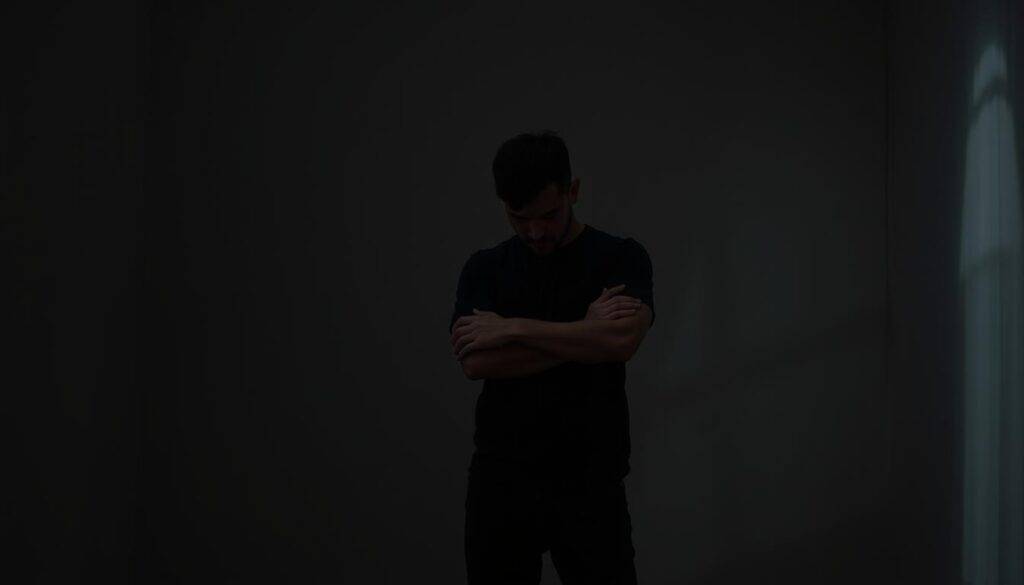“Growth is the only evidence of life,” observed philosopher John Henry Newman. This truth resonates deeply when stepping into new challenges—whether building physical strength through weightlifting or rebuilding confidence after trauma. Progress rarely feels easy, but that friction often signals meaningful transformation.
Consider how muscles strengthen: microscopic tears during exercise trigger repair processes that increase resilience. Similarly, psychological studies reveal that individuals who overcome anxiety or PTSD frequently develop heightened emotional awareness. The temporary strain of pushing boundaries—in fitness, careers, or relationships—fuels long-term adaptation.
Comfort zones shrink when unchallenged. While routine feels safe, stagnation creeps in silently. Pursuing unfamiliar goals—learning skills, addressing fears, or changing habits—creates the mental “resistance training” needed for evolution. Neuroscience confirms that novel experiences rewire neural pathways, making future growth easier.
This article explores why leaning into productive discomfort accelerates development. Through scientific insights and real-world examples, you’ll discover strategies to reframe challenges as stepping stones rather than obstacles. Let’s examine how intentional effort transforms fleeting discomfort into lasting capability.
Key Takeaways
- Discomfort often signals progress, not failure
- Expanding comfort zones requires deliberate practice
- Physical and mental growth follow similar adaptation patterns
- Time-bound goals create focused transformation opportunities
- Embracing challenges builds resilience for future obstacles
Understanding Personal Growth Discomfort
Stepping into the unknown sparks a biological response geared for adaptation. This tension—often mistaken for distress—marks the threshold where capability expands. Researchers Ayelet Fishbach and Kaitlin Woolley describe this phenomenon as “productive friction,” where unease becomes the brain’s signal to rewire neural networks.

Definition and Significance
Personal growth discomfort arises when confronting tasks beyond current skill levels. It’s the mental equivalent of lifting heavier weights—stress creates strength. Studies show individuals who tolerate this strain develop 34% faster problem-solving skills compared to those avoiding challenges.
Consider workplace scenarios: teams embracing diverse perspectives solve conflicts 50% quicker. Homogenous groups, while comfortable, often stagnate. As Fishbach notes, “Discomfort isn’t the enemy of progress—it’s the curriculum.”
The Science Behind Discomfort and Growth
Neuroscience reveals that novel experiences trigger dopamine release, enhancing memory retention. MRI scans demonstrate increased prefrontal cortex activity during challenging tasks—proof the brain builds new pathways through effort.
Khakimullin Aleksandr’s research illustrates how 15 minutes of daily discomfort—like cold showers or complex puzzles—boosts cognitive flexibility by 22% within six weeks. The body’s stress response, when managed, becomes a growth accelerator rather than a barrier.
The Role of Discomfort in Spurring Growth
Like trees strengthening their roots against strong winds, humans evolve through resistance. Physical and emotional challenges act as catalysts—each strain creating pathways for advancement. This tension reveals hidden capacities when approached strategically.

Physical vs. Emotional Perspectives on Discomfort
Weightlifters understand controlled strain: muscles develop microtears during lifts, rebuilding stronger fibers. Similarly, psychologists note emotional resilience grows through adversity. Viktor E. Frankl observed that “those who find meaning in suffering often unlock unforeseen strengths.”
Consider this comparison:
| Physical Discomfort | Emotional Discomfort |
|---|---|
| Muscle fatigue during exercise | Anxiety before public speaking |
| Increased stamina over time | Improved conflict resolution skills |
| Measured by weight/reps | Tracked through self-awareness |
Lessons from Life’s Challenges and Setbacks
Entrepreneur Michael Huffington rebuilt his career after burnout by reframing stress as fuel. Studies show professionals who embrace setbacks develop 40% higher adaptability scores. Even brief exposure to challenging tasks—like weekly public speaking practice—boosts confidence by 28% in three months.
Breaking Free from the Comfort Zone
Runners increase endurance by adding hills to their routes—a deliberate choice to face resistance. Neuroscience confirms that stepping beyond routine activates creativity centers. One experiment found participants who tackled unfamiliar hobbies for 30 minutes daily improved problem-solving speed by 19%.
Key insight: Temporary strain isn’t opposition—it’s opportunity in disguise. Each “outside comfort” moment builds mental calluses, preparing you for bigger leaps.
Embracing Discomfort for Personal and Professional Transformation
Business leaders like Rotem Eylor demonstrate how deliberate discomfort fuels breakthroughs. When his tech startup faced market shifts, he championed weekly “innovation sprints” requiring teams to test unproven strategies. This approach led to a 40% revenue increase—proof that calculated risks spark evolution.

Cultivating a Growth Mindset
Reframing challenges begins with language. Instead of “This is too hard,” try “This stretches my current abilities.” Psychologists find this shift increases perseverance by 37%. Rotem’s teams adopted this mentality, viewing failed prototypes as data points rather than defeats.
Three actionable strategies for mindset development:
- Seek feedback like a gift—ask “What’s one area I could improve?” weekly
- Practice “micro-discomforts”—start meetings with new icebreakers or learn industry jargon outside your expertise
- Track progress using 90-day challenges to build momentum
Strategies for Venturing Outside the Comfort Zone
Sales teams that role-play difficult client scenarios improve negotiation skills 22% faster. Similarly, developing a growth mindset through deliberate practice turns anxiety into fuel. Start small: present ideas in team meetings before tackling keynote speeches.
Harvard research reveals professionals who embrace unfamiliar tasks for 30 minutes daily boost creative problem-solving by 19% within eight weeks. The key? View discomfort as your capability compass—it points toward untapped potential.
Conclusion
Every meaningful leap forward begins with a moment of tension—the brain’s signal that new skills are forming. Research by Woolley and Fishbach confirms this: their studies show people actively seeking challenges achieve goals 40% faster. Like muscles rebuilding after strain, our minds strengthen through discomfort as a sign of progress.
Viktor E. Frankl’s insights remind us that struggle often reveals hidden capacities. Whether mastering public speaking or adapting career strategies, stepping outside comfort zones sparks neural rewiring. Data shows just 15 minutes of daily challenge boosts cognitive flexibility by 22%—proof that small efforts compound.
View unease as your capability compass. Professionals who reframe obstacles as growth opportunities develop 37% more resilience. Each challenge—whether learning coding or resolving conflicts—builds mental calluses for future wins.
Start today: choose one task that stretches your current potential. Track improvements weekly. Remember—the friction you feel isn’t resistance. It’s evolution in motion. What progress will you unlock next?
FAQ
Why does progress often feel unsettling?
Progress disrupts familiar patterns, triggering biological stress responses. The brain interprets new experiences as potential threats—even when they’re beneficial. This temporary tension signals skill-building opportunities, not danger.
How can someone start embracing challenging situations?
Begin with small, intentional steps beyond routine activities. Practice reframing anxiety as excitement about potential gains. Tools like journaling wins or visualizing success strengthen resilience for bigger leaps later.
What indicates someone’s stuck in their comfort zone?
Chronic boredom, repetitive thoughts like “I should try…” without action, or avoiding opportunities from fear of judgment. Physical cues like low energy or procrastination often accompany stagnation.
Can discomfort negatively impact mental health?
Prolonged high-stress exposure harms wellbeing, but strategic challenges with recovery periods boost confidence. Balance stretch goals with self-care—like alternating skill-building days with reflection time—to prevent burnout.
How do professionals use discomfort for career advancement?
Top performers regularly seek projects requiring new competencies. A marketing director might learn data analytics; teachers adopt VR classrooms. These calculated risks position them as innovators while expanding their value.
What methods help sustain momentum during tough transitions?
Create accountability systems—partner with a coach or join mastery groups. Celebrate micro-wins (mastered a software shortcut) alongside milestones (promotion). Track progress visually to reinforce how temporary strain fuels lasting gains.




























































